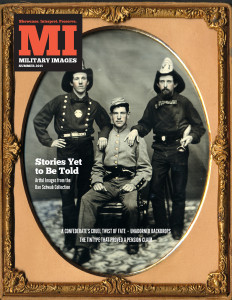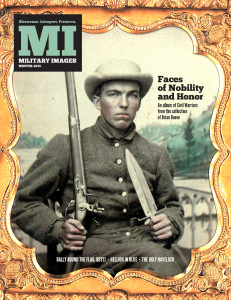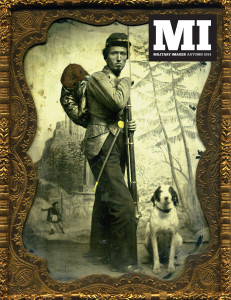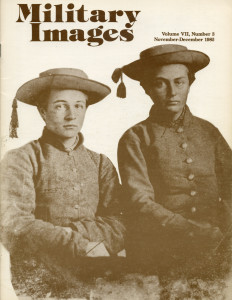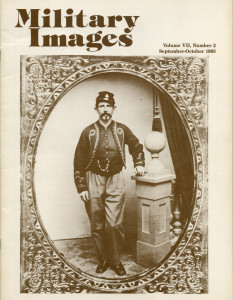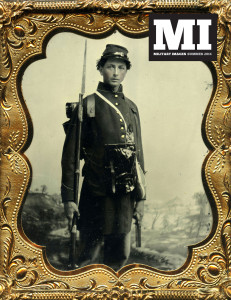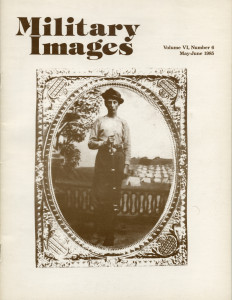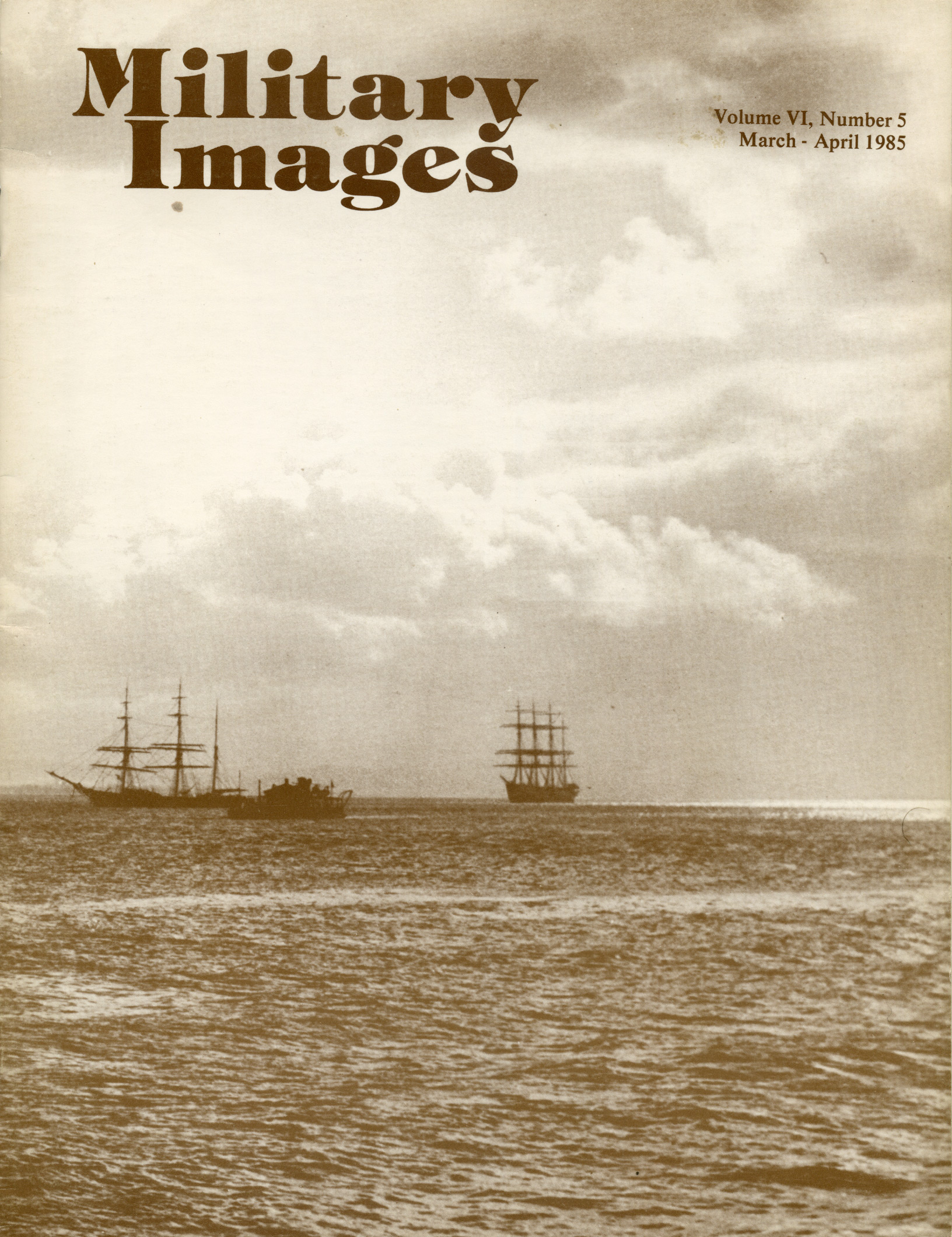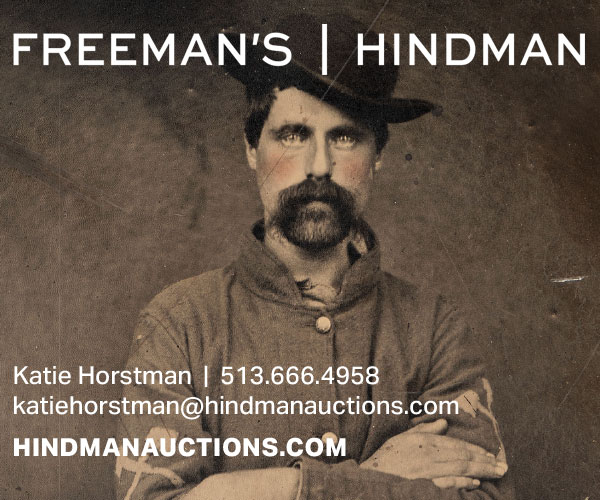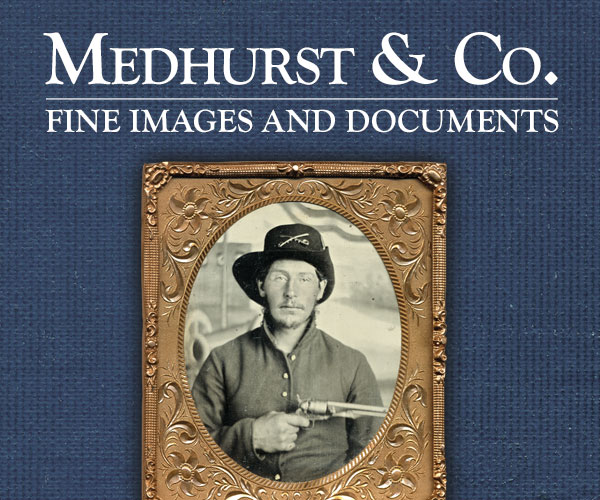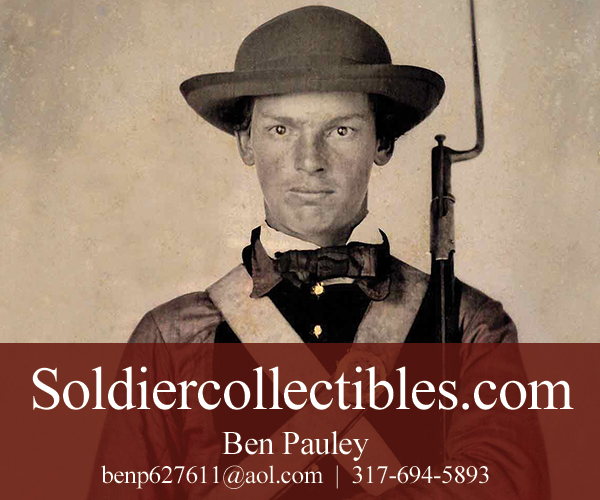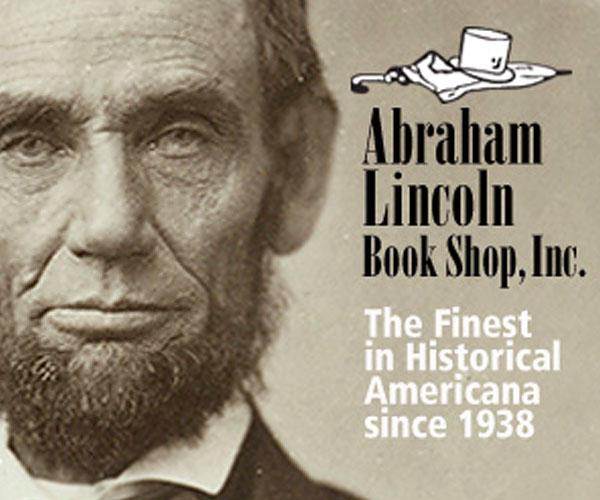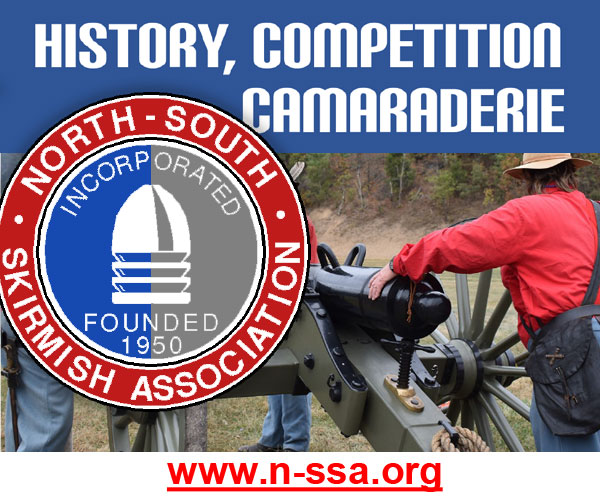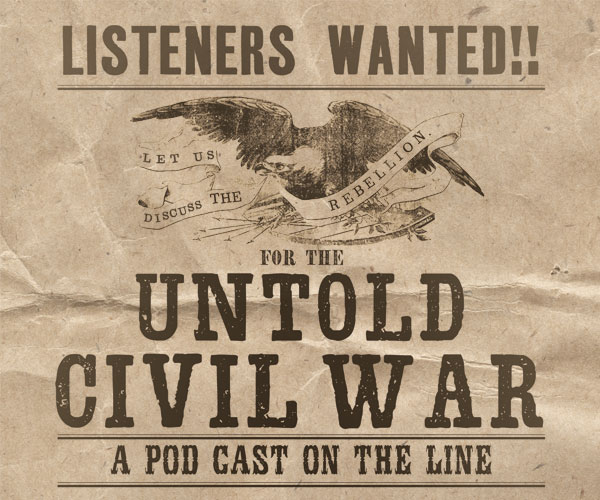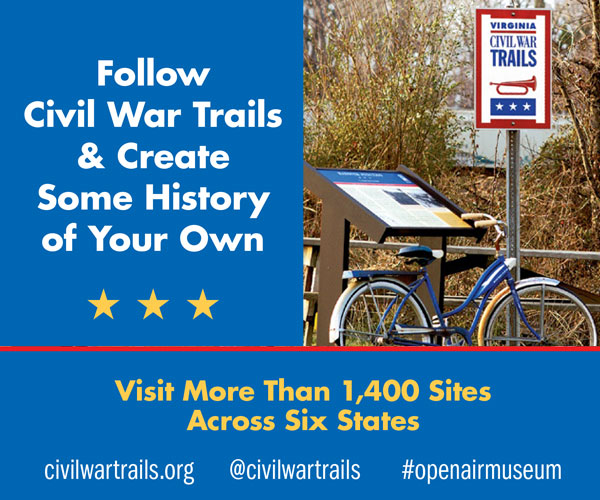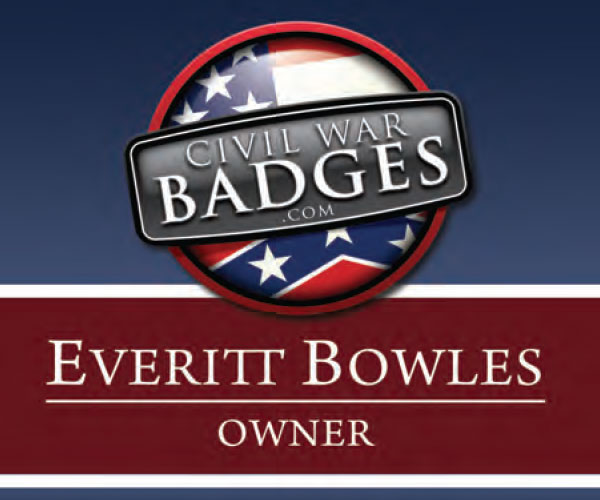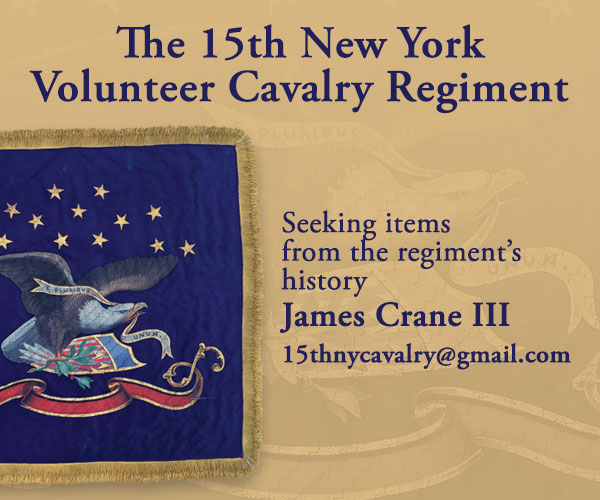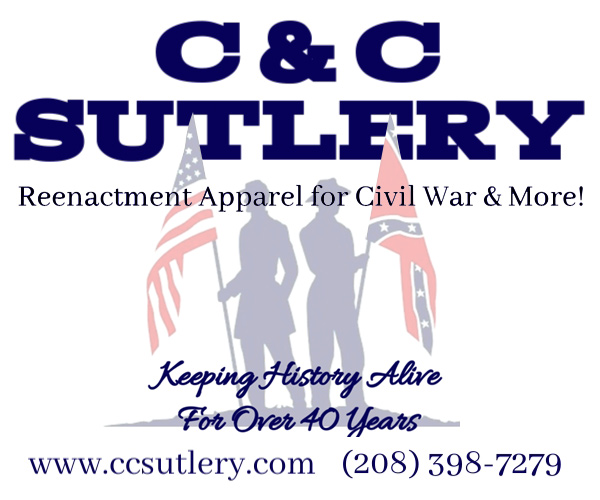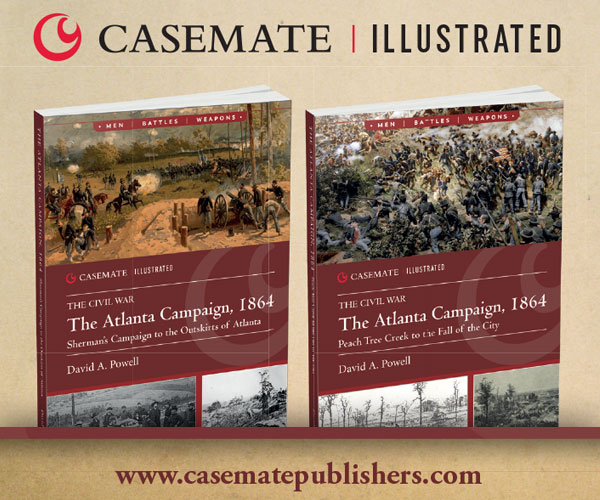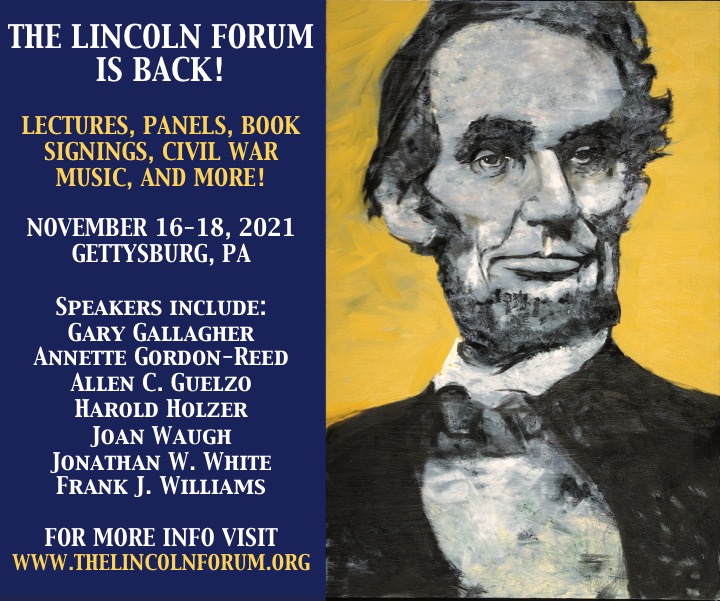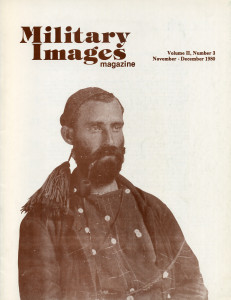 The complete issue
The complete issue
Vol. 2, No. 3
(32 pages)
Print edition: Visit our store to check availability
Digital edition: Visit JSTOR.org to purchase
Explore the MI Archives: Browse | Advanced search | Tutorial
Inside
Cover Image
An unidentified Zouave from the 9th New York Infantry from a quarter-plate tintype is on the cover of this issue of Military Images.
Editor’s Page (inside front cover)
The editor responds to questions regarding the content and the goals for the publication. Articles are submitted by the readership, and therefore the range of articles reflects that process. Readers are encouraged to submit articles that feature the “American fighting man” from the advent of photography in 1839 to the outbreak of World War II in 1939.
Mail Call (p. 2)
Readers weigh in on previous issues. A new subscriber expands the reach of the magazine to Australia, while another reader provides further insight into a previous article on the Homestead Steel Strike of 1892. Another reader from the Confederate Historical Association in Brussels, Belgium identifies a mysterious upper arm chevron from a past issue as being that of a Masonic symbol.
Thomas Franlin Dornblaser: Cavalryman in the Army of the Cumberland by Jeffrey S. Mosser (pp. 3-7)
Quoting the humorous writing of the 7th Pennsylvania Cavalry trooper, the article follows the Civil War journey of Thomas Dornblaser from his enlistment as a private in October 1861 to his discharge as a sergeant in August 1865. Dornblaser served in many of the pivotal campaigns in Tennessee, Georgia, and Alabama and had a wide variety of roles as well. The article includes images of two of his close friends, the various weapons that the unit was issued, and an image of Private Dornblaser with an experimental hinged cavalry hat, an example of which is now held in the collection of the Smithsonian Institution.,
The Mier P.O.W.’s in Mexico, 1844 by Kevin R. Young (pp. 8-9)
A daguerreotype showing a group of seven men is the centerpiece of the article, which describes the 1842 expedition which led to the capture of 305 abandoned soldiers of the Republic of Texas and how those “unofficial” soldiers continued their advance against the Mexican city of Mier, and how they fared in the hands of the Mexican government. Considered to be pirates rather than military prisoners, the men had to endure harsh conditions, escape, and then the recapture of 176 of them. These men had to participate in a lottery, as every tenth man was condemned to execution. Drawing from a pot of beans, the 159 who drew white beans were marched to Mexico City, while the 17 who drew black beans were shot on the spot. Those who survived until September 1844 were granted freedom at the deathbed behest of the Queen of Mexico. The daguerreotype image is probably the first photographic image of prisoners of war, showing the four identified Texican men wearing heavy chains around their ankles and being held by three heavily armed Mexican guards. As one of the men, Wily Jones, escaped successfully in March 1844, the image predates that event, making this an important artifact of both Texas and photographic history.
The U.S.M.C. Campaign Hat, 1898-1961 by John Stacey (pp. 10-13)
The iconic Marine campaign or “field hat” was first provided to Marines after landing in Cuba to fight in the Spanish-American War in 1898. Originally, the “fore-and-aft” crease was used on the hat, with the eagle-globe-and-anchor emblem worn on both the front and the left side of the hat. With the adoption of what was later known as the “Montana peak” in the 1912 regulations, the device began to be worn exclusively on the front of the hat. Various regulations required the hats to include battalion, company, and regimental numbers for identification purposes. The difference between hats worn by enlisted Marines and their officers were slight, with enlisted men wearing a ribbon band on their version while the officers wore a double cord with a sliding keeper and acorns on each end. The article includes ten different images that illustrate the evolution of the campaign hats worn by the Marine Corps.
Find the Fake (pp. 14-15)
The staff of Military Images provides the readers with six images and challenges them to find out which are actual historical images and which purport to be. (Answers provided on page 32.)
“Every damn… rebel is on the run!”: The 15th New Jersey at the Battle of the Opequon by Joseph G. Bilby (pp. 16-26)
Ten different images, ranging from individual portraits of officers from the 15th New Jersey Infantry to scenes of Winchester and the Valley Pike, illustrate this detailed article that describes the Battle of the Opequon in that began in mid-August 1864 and ended a month later. A number of sidebar items provide more detail on the “3rd New Jersey Cavalry” as well as information on “Draftees, Substitutes, and Volunteers” in the Civil War and how they impacted this battle in particular. Told from a number of different viewpoints on both sides of the conflict, as the 15th is pushed out of Winchester at the beginning of the battle and then forces their way back in against waning Confederate forces at the end.
A Doughboy at Barton’s Hill by Bob Stephens (p. 27)
This article relates the story of the author’s father, who was awarded the Croix de Guerre for single-handedly maintaining his aid station on the battlefield while his partner, Private Avery (also awarded the Croix de Guerre), went back to the lines to get the assistance of doctors. Private Stephens treated the wounded from October 8-10, 1918, going out to locate wounded on the battlefield. He would give directions to the dugout where the aid station was located to those who could walk, and would carry those who could not, all the time putting himself in harm’s way from poison gas, machine gun fire, and artillery shelling. A photograph featuring four members of the Medical Detachment, 144th Infantry, 36th Division to include Pvt. Stephens accompanies the article.
Stragglers (pp. 28-31)
The four pages of images submitted by readers for this month’s “Stragglers” feature follow some organization. The first page has two images featuring women; one is a group photograph of four women and four soldiers taken about 1880 at Fort Benjamin Harrison, Indiana and paired with a vivandiere photographed between 1864 to 1866 on Long Island. The next page has three different tintype images of New York Zouave soldiers. Following up on a previous issue which featured an officer from a Pennsylvania “rifle” regiment, the third page includes a colonel of the “2d German Rifle Regiment” and a third lieutenant from the Massachusetts “3d Battalion of Rifles.” Finally, there are two images of shipping from New York City on the final page. A ferry boat is shown ready for impressed service into the Navy in 1861, with crew at the ready and prepared with “collapsible shields against small arms fire.” A more unique images shows cannoneers firing over the East River in 1904, with the misconceived notion that this would force over 1000 bodies lost in the General Slocum sinking to emerge.
Back Image
Three of the five Scott brothers who served in the Civil War are pictured, shown with new Enfield rifles taken from the garrison at Vicksburg. While one served in a New York Regulars unit and another is not pictured, these Iowa brothers were all in Company H of the 21st Iowa Infantry.
